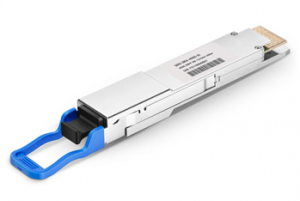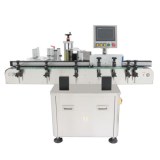For a long time, Primus It has been working to solve the bottleneck problem of network bandwidth optical modules through continuous technological innovation, adheres to concentrate superior forces constantly improve the industrial layout, and enhance the company's core competitiveness and overall strength, creating the perfect solution. Meanwhile, Primus IT will continue to invest to increase R & D efforts, and actively help new infrastructure.
SFP applications
SFP transceivers have many different transmit and receive types, and users can choose the appropriate transceiver for each link to provide "optical performance" based on available fiber module types, such as multimode or single-mode fiber. SFP transceivers also provide copper interfaces, enabling host devices designed primarily for optical fiber communications to communicate over UTP network cables.
There are also wavelength division multiplexing (CWDM) and single fiber "bi-directional" (1310 to 1490nm wavelength uplink / downlink) SFP. Most optical SFP transceivers support SFF-8472 (industry standard multilateral protocol). According to the SFF-8472 protocol, digital diagnostic monitoring (DDM, Digital Diagnostic Monitor) must be supported. This feature enables end users to detect SFP parameters in real time, such as the five basic monitoring quantities: Temperature, Vcc, Tx Bias Current, Tx Power, Rx Power.
Development of ftth market
As more and more companies introduce improved FTTH networks, smart homes have recently become mainstream. With the growth of bandwidth demand, FTTH operators need to provide higher quality services and products. The global fiber-to-the-home (FTTH) market is expected to grow at a fairly rapid rate during the forecast period from 2021 to 2026.
Fiber-to-the-home (FTTH) market growth-the growing use of fiber-to-the-home (FTTH) in TV, VOIP, games, LAN services, distance education, smart home and other industries is driving the growth of the global fiber-to-the-home (FTTH) market. Individual devices connected to the Internet do not require high bandwidth. However, smart homes pose challenges to operators. As a result, users' demand for high-speed Internet is increasing rapidly and will continue to maintain this trend in the near future.
Telecom network infrastructure
The telecommunications infrastructure is the physical medium through which all Internet traffic flows. This includes telephone lines, cables (including submarine cables), satellite, microwave and mobile technologies, such as fifth-generation (5G) mobile networks. Using power line technology, even standard power grids can be used to relay Internet traffic. Innovative wireless solutions such as drones are also being gradually deployed.
Therefore, the Internet is a giant network that connects devices in different geographical areas. The user's device will wirelessly transmit information packets over the cellular network. These packets will then be routed between the network and each connected network via Ethernet, coaxial, and land, underground, or submarine cables until the packet reaches the destination server. this process does not necessarily follow the exact same route.
FAQs OF New Released
Q:
What is 400G optical transceivers?
A:
The 400G optical module has a transmission rate of 400G, which was born to adapt to the network market of 100M, 1G, 25G, 40G to 100G, 400G, and even 1T. 400G optical modules play a vital role and influence in the construction of 400G network systems.
Q:
What is the difference between 400G optical modules and 10G, 25G, 40G optical modules?
A:
Compared with 10G, 25G and 40G optical modules, the arrival of 400G optical modules will enable optical communications to enter a new era. Optical communications are transforming from single-carrier modulation coherent detection of low-end optical modules to polarization multiplexing multi-carrier applications.
There are many optical module manufacturers in China, but we are one of the best choice for you.
Location : RM 419, Building 402, Shencaiyuan, No. 5007 Huanggang Road, Futian District,ShenZhen ,China, 518000 Shenzhen,
Contact : it primus, 86 0755 25924025








